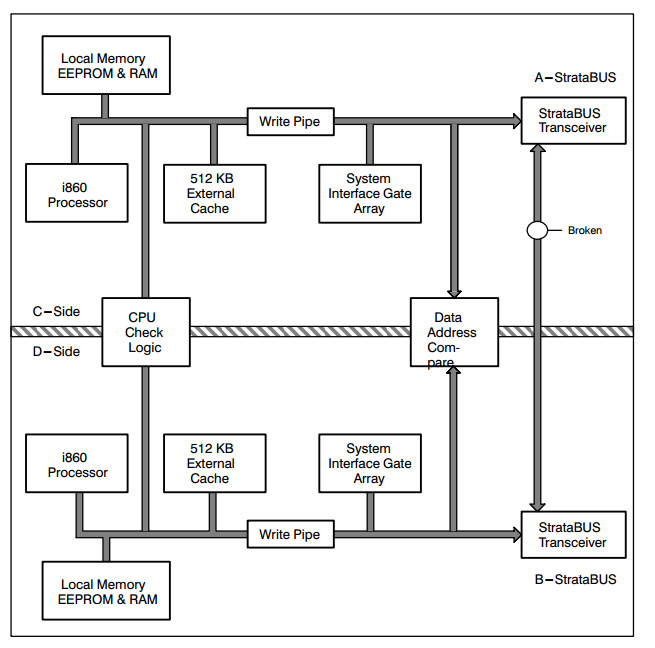In the US, are going to turn off the server with 24 years uptime

In 1993, Bill Clinton was president of the United States for a year. In the same year, Windows NT 3.1 and the Jurassic Park came out. In Russia, at that time, an event occurred that later became known as the “Constitutional Crisis of 1993”. Then Phil Hogan, IT architect at Great Lakes Works, launched a new fault-tolerant server from Stratus Technologies, Stratus XA / R 10.
Since that time, a lot of things have changed, new countries have appeared, several wars have passed, large and small, in science and technology, if not a revolution, then a qualitative leap has occurred. And the server from Stratus Technologies is still working, and there are practically no problems with it. Uptime machine is 24 years.
This failover server has many elements duplicated. Over time, some of them had to be replaced (without turning off the system itself), but Hogan assesses the safety of the original structure by 80%. “He was never turned off, because there were no events that he could not handle. I can't even imagine a situation in which we would get an unplanned outage, ”says Hogan. The server worked so long because almost all of its elements correspond to the hot-swap mode. Each logical processor, in fact, is created from 4 physical processors, which are placed in the form of two paired sets.
')
Not so long ago this server became famous. In 2010, Stratus decided to study the duration of the smooth operation of its systems. The goal was to find a server with maximum uptime. At that time, this server was the winner. He works for the benefit of the company Great Lakes Works EGL, which was previously known as the Double Eagle Steel Coating Co.
 Now the server is under the control of the old version of the operating system from Stratus, which was last updated sometime in the early 2000s. “It is extremely stable,” says Hogan’s entire system.
Now the server is under the control of the old version of the operating system from Stratus, which was last updated sometime in the early 2000s. “It is extremely stable,” says Hogan’s entire system.His company does not have a service contract with Stratus, so the parts that were replaced were purchased from third-party suppliers. You can still buy various items to this server - this is no problem. The system was planned to be radically updated several times, but something was always hindering these plans. In addition, there were no failures, users did not complain, so the management decided to follow the wise rule “it works — don't go.”
Despite the ancient interface and outdated system, it was easy to work with the server. If necessary, additional configuration took a few minutes. Jason Andersen, vice president of a division of Stratus, said the systems his company produces are extremely reliable.
During the campaign held in 2010, the company found out that other long-lived servers are operating in the country (USA). But this server, as far as can be judged, is the oldest of those that have never shut down. Such systems are used to process financial transactions, telecommunications, and credit card transactions. Stratus systems support Windows, Linux, Vmware and VOS.

What will happen next with a brave server that has worked tirelessly all these years? Unfortunately, it is planned to turn it off. The fact is that the company for the benefit of which it works, Great Lakes Works, in 2015 became part of the United States Steel Corp. And this corporation plans to conduct a global update of all morally and physically obsolete systems in April, that is, in two months. The server from Stratus is planned to be turned off and sent to a deserved rest at some warehouse.
It is not yet known what will happen to Hogan. All this time, a specialist supported the server, and only he knows all the features of the machine. When the server is down, Hogan may have to do some other work.
Now the need for fault-tolerant servers, of course, remains. But to a greater degree such systems can be replaced by cloud services, which are massively offered by various telecommunication companies. The first servers of the XA / R line entered the market in early 1991 and cost quite a lot - from $ 145,000 to $ 1 million. The hardware platform for the XA is the Intel i860XR / XP . The first systems were based on i860XR processors with a core frequency of 32 MHz. A little later they were replaced by 48-MHz processors. The servers of the above type were made by the company until 1995.
Source: https://habr.com/ru/post/320930/
All Articles